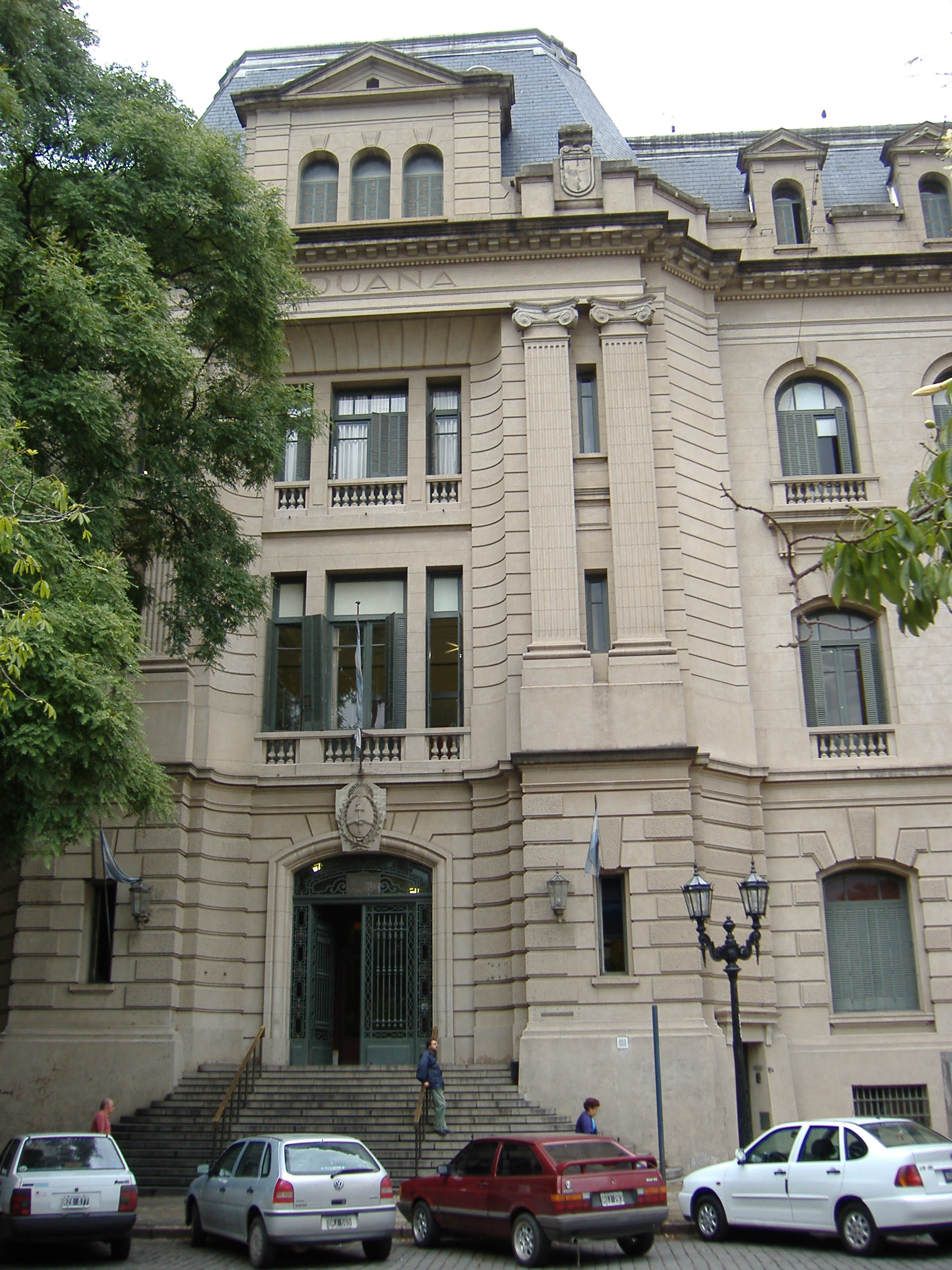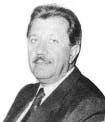|
Plaza Sarmiento (Rosario)
Plaza Sarmiento is a plaza (urban square) in the city of Rosario, province of Santa Fe, Argentina. Its name is an homage to former Argentine president Domingo Faustino Sarmiento. Plaza Sarmiento is located in a strategic location within the Rosario downtown area, and serves as a transport node for many urban and short-distance interurban bus lines. It occupies almost two blocks, defined by San Luis St., Entre Ríos St., Mendoza St. and Corrientes St. It is divided by San Juan St. (running east–west). It features a monument crowned by a statue of Sarmiento, known as a pioneer and promoter of public education in Argentina. The only route of the Rosario trolleybus system, line K, passes through Plaza Sarmiento. The plaza currently hosts an outdoors artisans' fair several days each week. History The area where the current plaza is located at present was formerly occupied by a small lagoon (''Laguna Sánchez''). In 1867 the governor of Santa Fe, Nicasio Oroño, upon a request of ... [...More Info...] [...Related Items...] OR: [Wikipedia] [Google] [Baidu] |
Plaza Sarmiento Rosario 2
A town square (or public square, urban square, city square or simply square), also called a plaza or piazza, is an open public space commonly found in the heart of a traditional town or city, and which is used for community gatherings. Related concepts are the civic center, the market square and the village green. Most squares are hardscapes suitable for open market (place), markets, concerts, political rallies, and other events that require firm ground. They are not necessarily a true square, geometric square. Being centrally located, town squares are usually surrounded by small shops such as Bakery, bakeries, meat markets, cheese stores, and clothing stores. At their center is often a well, monument, statue or other feature. Those with fountains are sometimes called fountain squares. The term "town square" (especially via the term "public square") is synonymous with the politics of many cultures, and the names of a certain town squares, such as the Euromaidan or Red Squar ... [...More Info...] [...Related Items...] OR: [Wikipedia] [Google] [Baidu] |
Rosario
Rosario () is the largest city in the central provinces of Argentina, Argentine province of Santa Fe Province, Santa Fe. The city, located northwest of Buenos Aires on the west bank of the Paraná River, is the third-most populous city in the country after Buenos Aires and Cordoba. With a growing and important metropolitan area, Greater Rosario has an estimated population of 1,750,000 . One of its main attractions includes the neoclassical architecture, neoclassical, Art Nouveau, and Art Deco architecture that has been preserved in hundreds of residences, houses and public buildings. The city is also famous for being the birthplace of the Argentine footballer Lionel Messi. Rosario is the head city of the Rosario Department and is located at the heart of the major industrial corridor in Argentina. The city is a major rail transport, railroad terminal and the shipping center for north-eastern Argentina. Ships reach the city via the Paraná River, which allows the existence of a ... [...More Info...] [...Related Items...] OR: [Wikipedia] [Google] [Baidu] |
Provinces Of Argentina
Argentina has 23 provinces (, singular ) and one autonomous city, Buenos Aires, which serves as the federal capital, as determined by Congress. The provinces and the capital have their own constitutions and exist under a federal system. History During the War of Independence, cities and their surrounding areas became provinces through local councils ( cabildos). This process was finalized during the Anarchy of the Year XX, forming the first 13 provinces. Jujuy seceded from Salta in 1834, and the thirteen provinces became fourteen. After seceding for a decade, Buenos Aires Province accepted the 1853 Constitution of Argentina in 1861, and its capital city was made a federal territory in 1880. A law from 1862 designated as national territories those territories under federal control but outside the frontiers of the provinces. In 1884 they served as bases for the establishment of the governorates of Misiones, Formosa, Chaco, La Pampa, Neuquén, Río Negro, Chubut, ... [...More Info...] [...Related Items...] OR: [Wikipedia] [Google] [Baidu] |
Santa Fe Province
The Invincible Province of Santa Fe (, , lit. "Holy Faith") is a Provinces of Argentina, province of Argentina, located in the center-east of the country. Neighboring provinces are from the north clockwise Chaco Province, Chaco (divided by the 28th parallel south), Corrientes Province, Corrientes, Entre Ríos Province, Entre Ríos, Buenos Aires Province, Buenos Aires, Córdoba Province, Argentina, Córdoba, and Santiago del Estero Province, Santiago del Estero. Together with Córdoba and Entre Ríos, the province is part of the economico-political association known as the Center Region (Argentina), Center Region. Santa Fe's most important cities are Rosario (population 1,193,605), the capital Santa Fe, Argentina, Santa Fe (369,000), Rafaela (100,000), Reconquista, Santa Fe, Reconquista (99,000) Villa Gobernador Gálvez (74,000), Venado Tuerto (69,000), and Santo Tomé, Santa Fe, Santo Tomé (58,000). Demonym Citizens of the province are known as ''santafesinos'' (fem. ''santafes ... [...More Info...] [...Related Items...] OR: [Wikipedia] [Google] [Baidu] |
Argentina
Argentina, officially the Argentine Republic, is a country in the southern half of South America. It covers an area of , making it the List of South American countries by area, second-largest country in South America after Brazil, the fourth-largest country in the Americas, and the List of countries and dependencies by area, eighth-largest country in the world. Argentina shares the bulk of the Southern Cone with Chile to the west, and is also bordered by Bolivia and Paraguay to the north, Brazil to the northeast, Uruguay and the South Atlantic Ocean to the east, and the Drake Passage to the south. Argentina is a Federation, federal state subdivided into twenty-three Provinces of Argentina, provinces, and one autonomous city, which is the federal capital and List of cities in Argentina by population, largest city of the nation, Buenos Aires. The provinces and the capital have their own constitutions, but exist under a Federalism, federal system. Argentina claims sovereignty ov ... [...More Info...] [...Related Items...] OR: [Wikipedia] [Google] [Baidu] |
President Of Argentina
The president of Argentina, officially known as the president of the Argentine Nation, is both head of state and head of government of Argentina. Under Constitution of Argentina, the national constitution, the president is also the Head of government, chief executive of the Government of Argentina, federal government and commander-in-chief of the Armed Forces of the Argentine Republic, armed forces. Throughout Argentine history, the List of heads of state of Argentina , office of head of state has undergone many changes, both in its title as in its features and powers. The current president Javier Milei was sworn into office on 10 December 2023. He succeeded Alberto Fernández. The constitution of Argentina, along with several constitutional amendments, establishes the requirements, powers, and responsibilities of the president, the term of office and the method of election. History The origins of Argentina as a nation can be traced to 1776, when it was separated by King Ch ... [...More Info...] [...Related Items...] OR: [Wikipedia] [Google] [Baidu] |
Domingo Faustino Sarmiento
Domingo Faustino Sarmiento (15 February 1811 – 11 September 1888) was President of Argentina from 1868 to 1874. He was a member of a group of intellectuals, known as the '' Generation of 1837'', who had a great influence on 19th-century Argentina. He was particularly concerned with educational issues and was also an important influence on the region's literature. His works spanned a wide range of genres and topics, from journalism to autobiography, to political philosophy and history. Sarmiento grew up in a poor but politically active family that paved the way for many of his future accomplishments. Between 1843 and 1850, he was frequently in exile, and wrote in both Chile and in Argentina. His most famous work was '' Facundo'', a critique of Juan Manuel de Rosas, that Sarmiento wrote while working for the newspaper ''El Progreso'' during his exile in Chile. The book brought him far more than just literary recognition; he expended his efforts and energy on the war against dicta ... [...More Info...] [...Related Items...] OR: [Wikipedia] [Google] [Baidu] |
Public Education
A state school, public school, or government school is a primary school, primary or secondary school that educates all students without charge. They are funded in whole or in part by taxation and operated by the government of the state. State-funded schools are global with each country showcasing distinct structures and curricula. Government-funded education spans from primary to secondary levels, covering ages 4 to 18. Alternatives to this system include homeschooling, Private school, private schools, Charter school, charter schools, and other educational options. By region and country Africa South Africa In South Africa, a state school or government school refers to a school that is state-controlled. These are officially called public schools according to the South African Schools Act of 1996, but it is a term that is not used colloquially. The Act recognised two categories of schools: public and independent. Independent schools include all private schools and schools t ... [...More Info...] [...Related Items...] OR: [Wikipedia] [Google] [Baidu] |
Trolleybuses In Rosario
The Rosario trolleybus system () is part of the public transport network in Rosario, Santa Fe, Rosario, the largest city in the Provinces of Argentina, province of Santa Fe Province, Santa Fe, Argentina.Webb, Mary (ed.) (2009). ''Jane's Urban Transport Systems 2009-2010'', p. 6. Coulsdon, Surrey (UK): Jane's Information Group. . Opened in 1959, the trolleybus system presently comprises two routes, designated as lines K and Q. The latter opened in 2017, using new vehicles, but did not require any new overhead line, overhead wires.''Trolleybus Magazine'' No. 335 (September–October 2017), p. 186. National Trolleybus Association (UK). . History Early years The Rosario system opened on 24 May 1959.Murray, Alan (2000). ''World Trolleybus Encyclopaedia'', p. 81. Yateley, Hampshire, UK: Trolleybooks. .Morrison, Allen (2017)The Trolleybuses of Latin America in 2017 Retrieved 24 December 2017. It replaced the old Trams in Rosario, Rosario electric tramway network, which had been in exi ... [...More Info...] [...Related Items...] OR: [Wikipedia] [Google] [Baidu] |
Governor Of Santa Fe
The Governor of Santa Fe () is a citizen of Santa Fe Province, in Argentina, holding the office of governor for the corresponding period. Currently the governor of Santa Fe is Maximiliano Pullaro, of the Justicialist Party. According to the provincial constitution (sanctioned in 1962), . the governor is elected by the simple majority of the popular vote, along with a vice governor, for a four-year term, and cannot be re-elected consecutively. The governor must be a native Argentine citizen or the child of a native citizen, and must either have been born in the province or resided continuously in the province during the two years prior to the election. List of '' |







